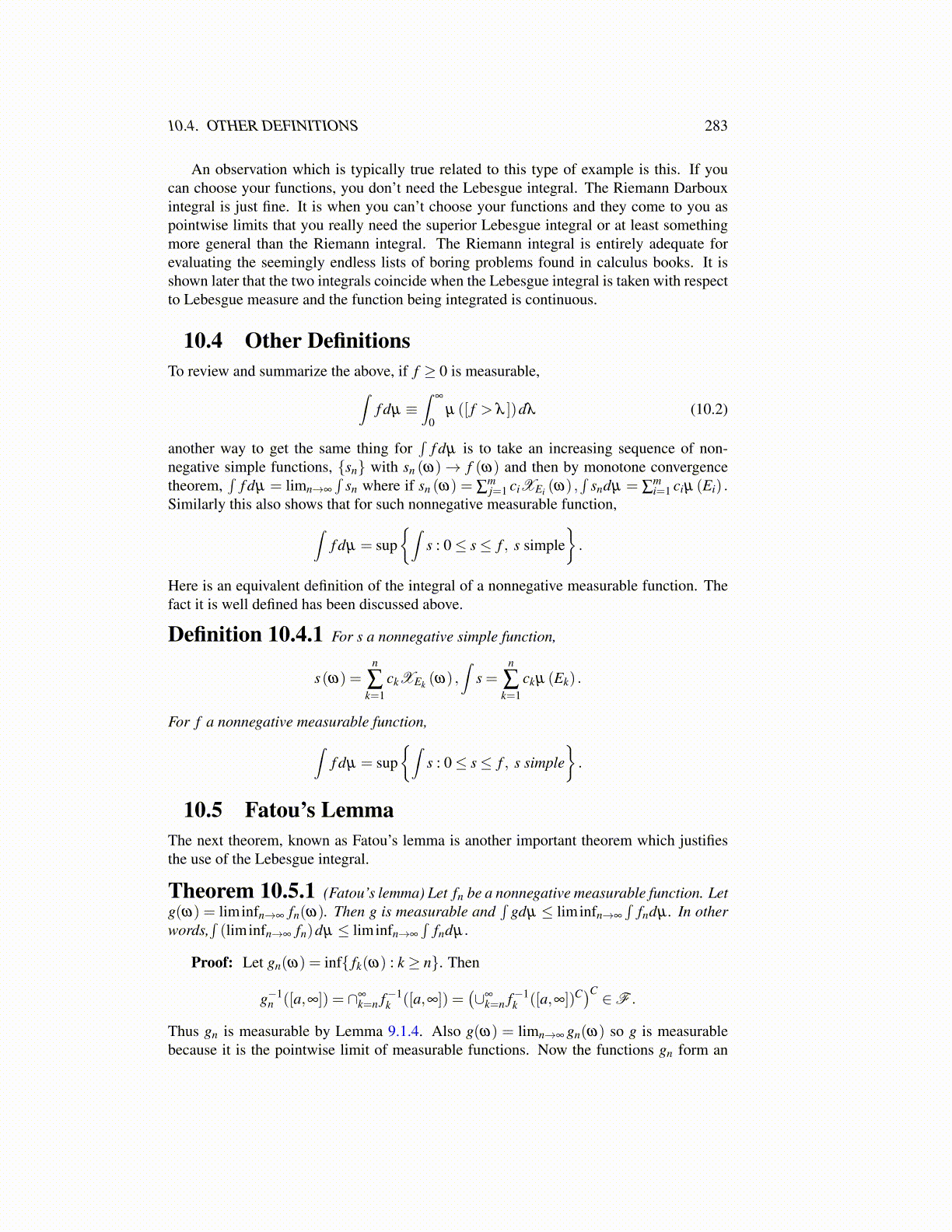
10.4. OTHER DEFINITIONS 283
An observation which is typically true related to this type of example is this. If youcan choose your functions, you don’t need the Lebesgue integral. The Riemann Darbouxintegral is just fine. It is when you can’t choose your functions and they come to you aspointwise limits that you really need the superior Lebesgue integral or at least somethingmore general than the Riemann integral. The Riemann integral is entirely adequate forevaluating the seemingly endless lists of boring problems found in calculus books. It isshown later that the two integrals coincide when the Lebesgue integral is taken with respectto Lebesgue measure and the function being integrated is continuous.
10.4 Other DefinitionsTo review and summarize the above, if f ≥ 0 is measurable,∫
f dµ ≡∫
∞
0µ ([ f > λ ])dλ (10.2)
another way to get the same thing for∫
f dµ is to take an increasing sequence of non-negative simple functions, {sn} with sn (ω)→ f (ω) and then by monotone convergencetheorem,
∫f dµ = limn→∞
∫sn where if sn (ω) = ∑
mj=1 ciXEi (ω) ,
∫sndµ = ∑
mi=1 ciµ (Ei) .
Similarly this also shows that for such nonnegative measurable function,∫f dµ = sup
{∫s : 0≤ s≤ f , s simple
}.
Here is an equivalent definition of the integral of a nonnegative measurable function. Thefact it is well defined has been discussed above.
Definition 10.4.1 For s a nonnegative simple function,
s(ω) =n
∑k=1
ckXEk (ω) ,∫
s =n
∑k=1
ckµ (Ek) .
For f a nonnegative measurable function,∫f dµ = sup
{∫s : 0≤ s≤ f , s simple
}.
10.5 Fatou’s LemmaThe next theorem, known as Fatou’s lemma is another important theorem which justifiesthe use of the Lebesgue integral.
Theorem 10.5.1 (Fatou’s lemma) Let fn be a nonnegative measurable function. Letg(ω) = liminfn→∞ fn(ω). Then g is measurable and
∫gdµ ≤ liminfn→∞
∫fndµ . In other
words,∫(liminfn→∞ fn)dµ ≤ liminfn→∞
∫fndµ.
Proof: Let gn(ω) = inf{ fk(ω) : k ≥ n}. Then
g−1n ([a,∞]) = ∩∞
k=n f−1k ([a,∞]) =
(∪∞
k=n f−1k ([a,∞])C
)C ∈F .
Thus gn is measurable by Lemma 9.1.4. Also g(ω) = limn→∞ gn(ω) so g is measurablebecause it is the pointwise limit of measurable functions. Now the functions gn form an